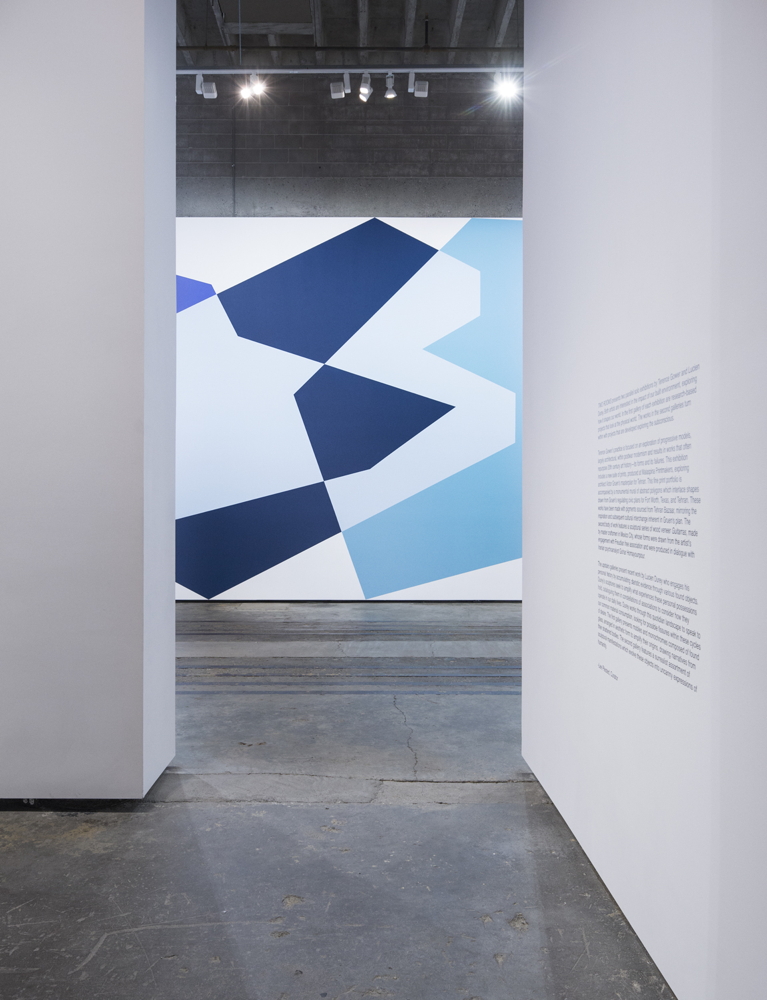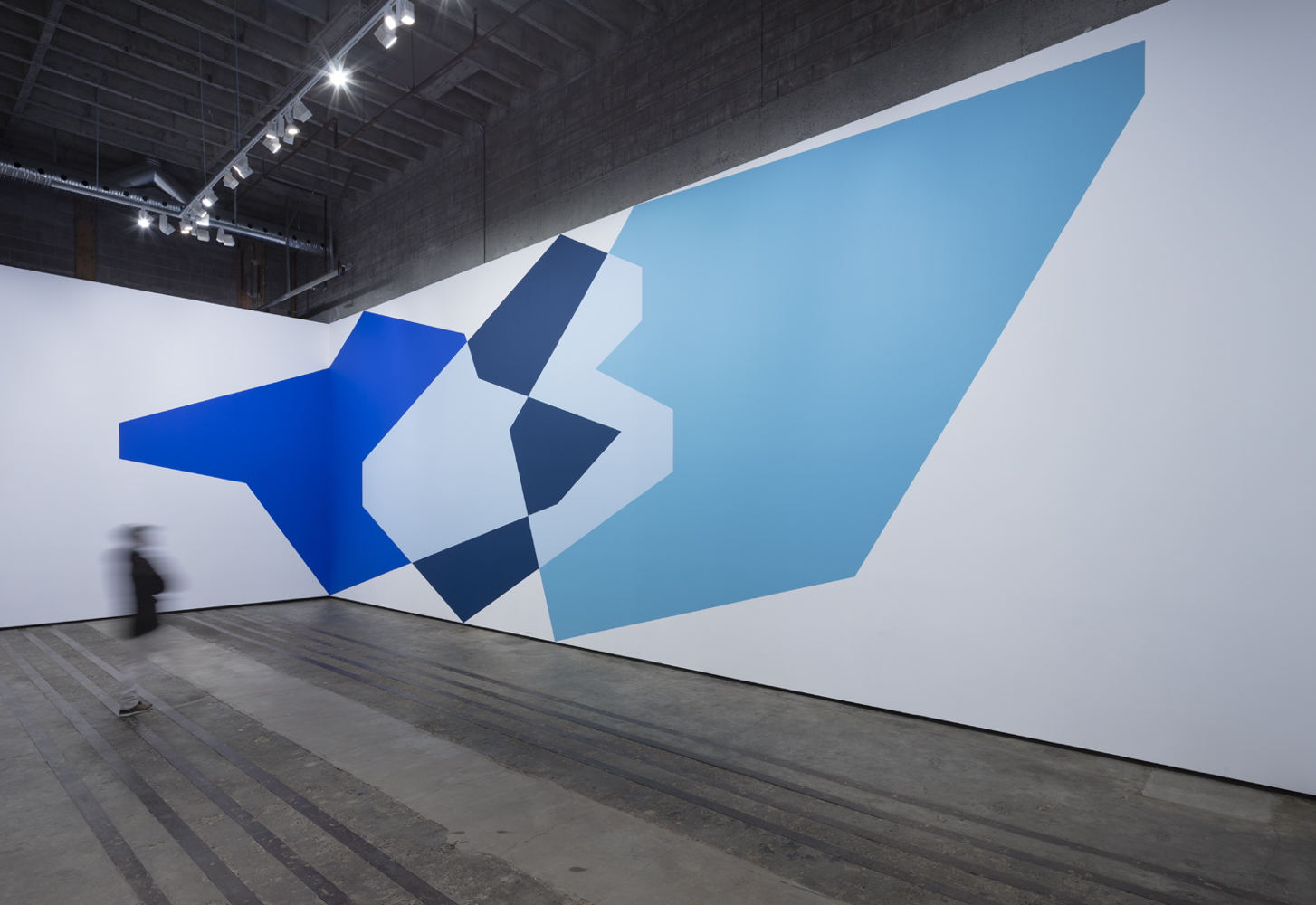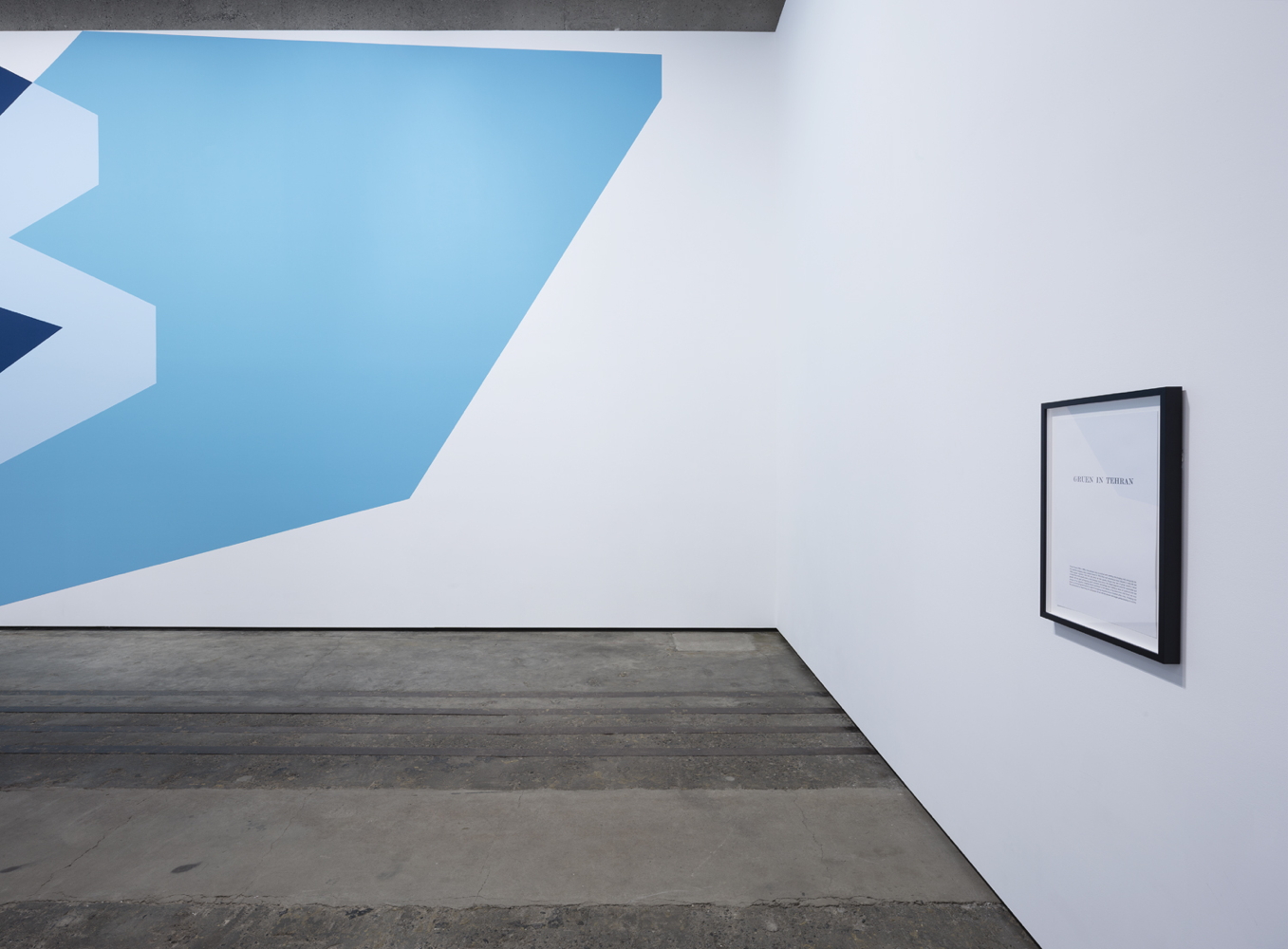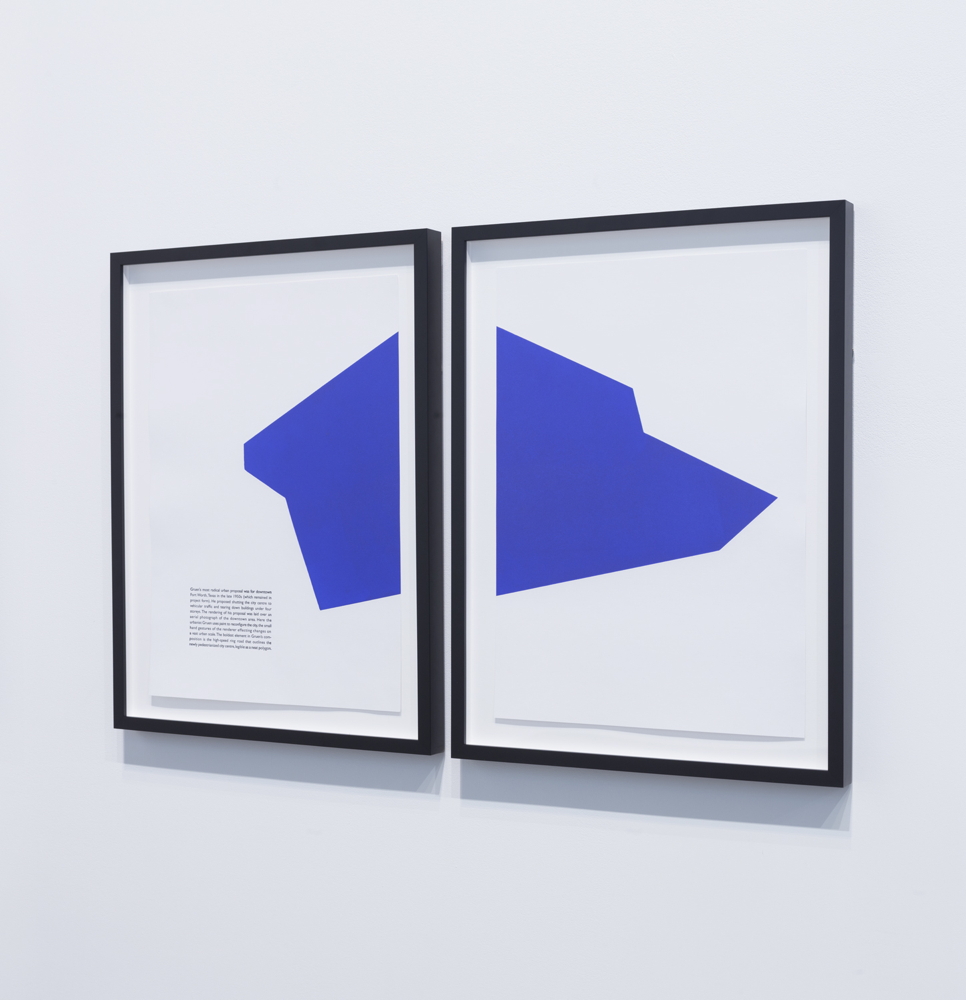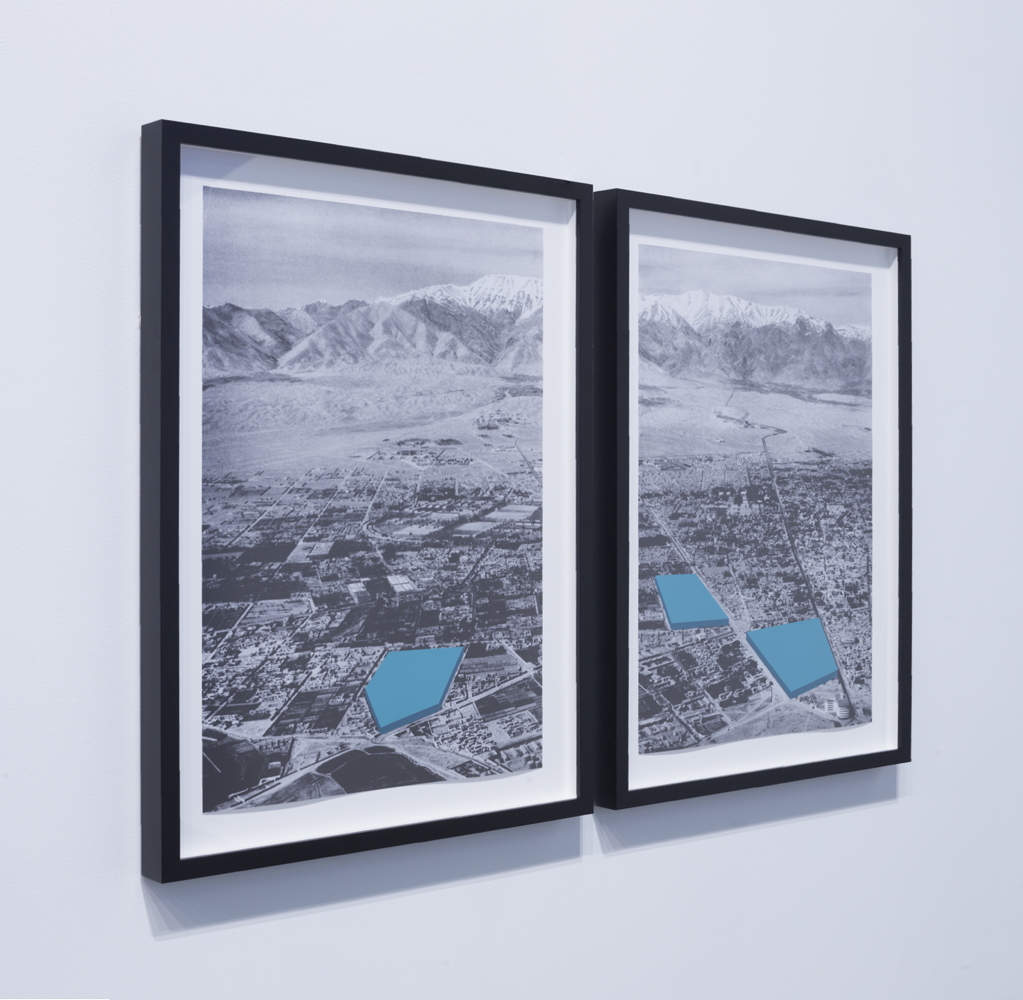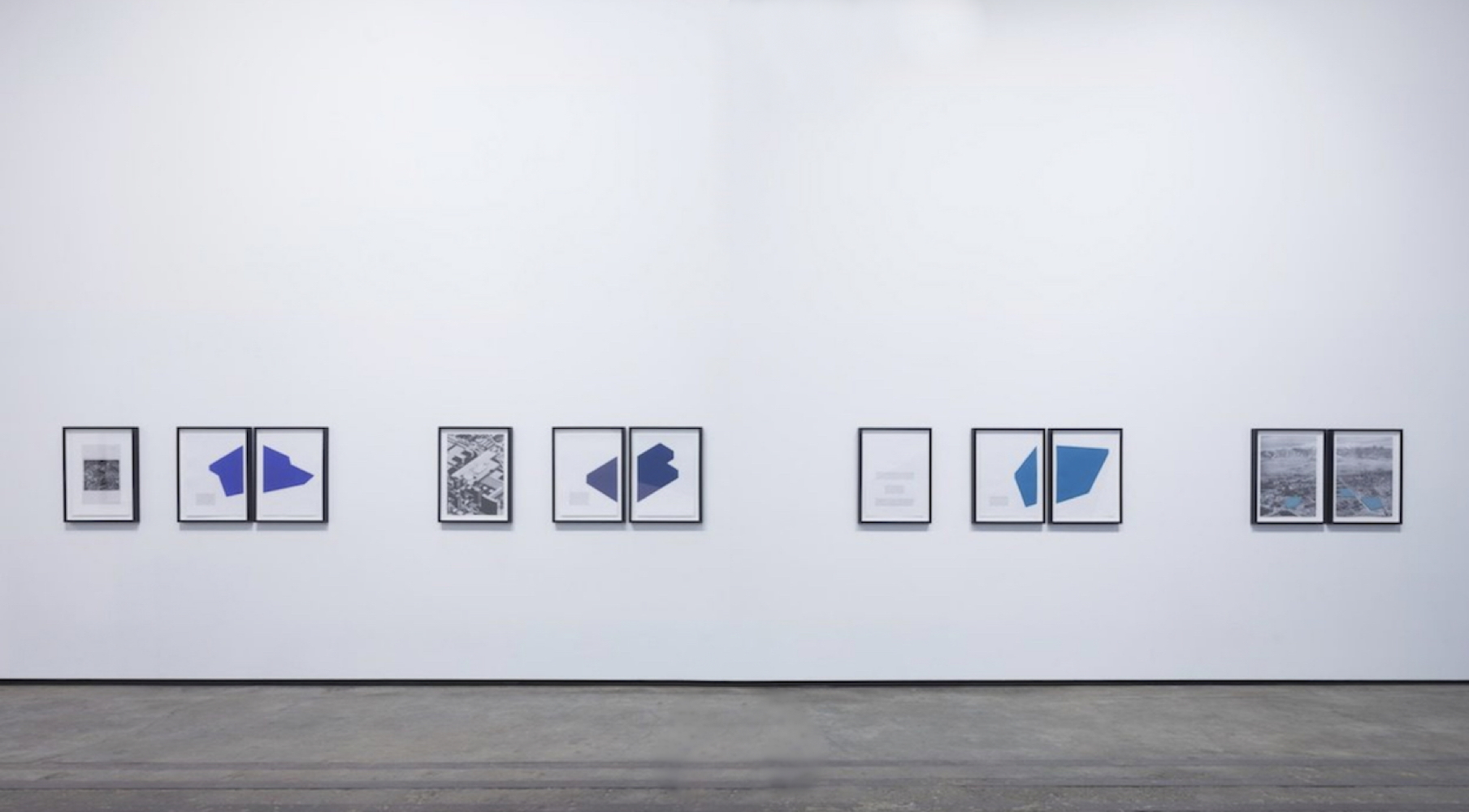In the late 1960s, the Shah of Iran invited architect and urbanist Victor Gruen (popularly considered the inventor of the shopping mall) to collaborate on a new Tehran Comprehensive Plan—partially implemented, then abandoned at the Iranian Revolution. The 12-print series juxtaposes Gruen’s most radical pedestrianized shopping zone scheme, for Fort Worth, Texas, with his first observations of the car-free Tehran Bazaar, soon to become the world’s largest covered shopping precinct; an ancient shopping typology vaster than any of Gruen’s post-war retail schemes. The polygons that appear in the prints are derived from the street patterns of Fort Worth and Tehran, and are interlaced in the wall mural to evoke the geometry of Iranian ceramics. The prints and mural are rendered with pigments purchased from a traditional vendor in the Tehran bazaar, an artifact from the project’s source that problematizes the work’s value (due to the US-led embargo).
Documentation:
Installation views at Monte Clark Gallery, Vancouver, Canada
Gruen in Tehran,
Terence Gower, 2019
Wall Installation: Imported pigments and vinyl paint, 5.5 x 16 Metres
Prints: 12 prints made with imported-pigment-based inks using woodblock, aquatint etching, embossed letterpress, silkscreen, and digital printing on paper, 54 x 38 cm each
